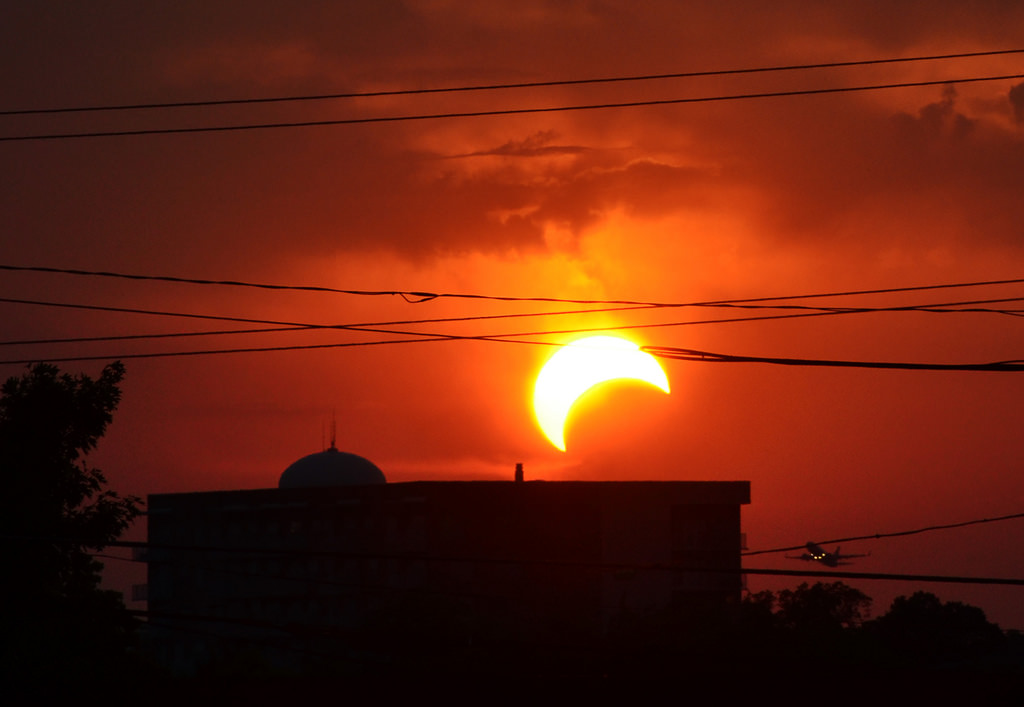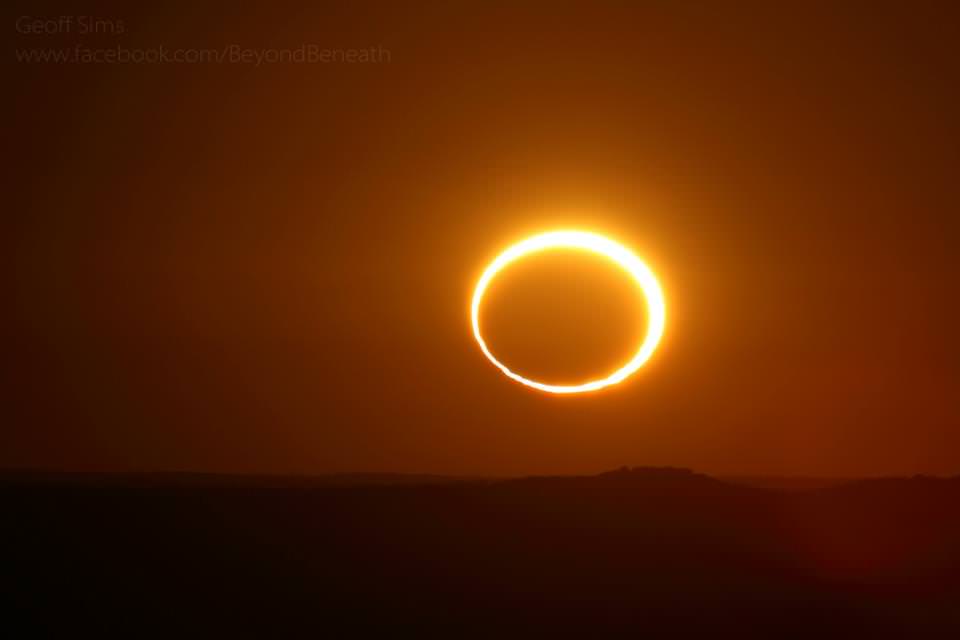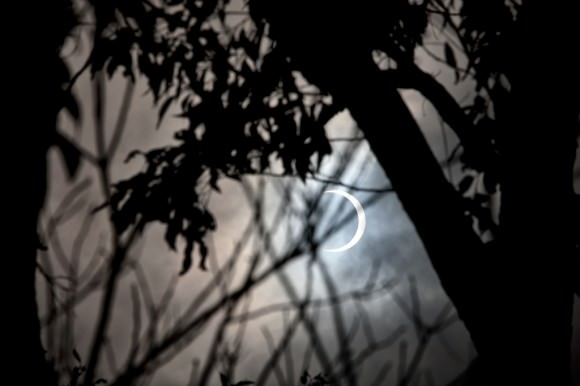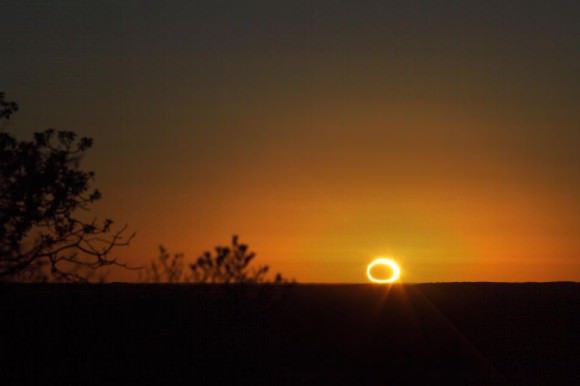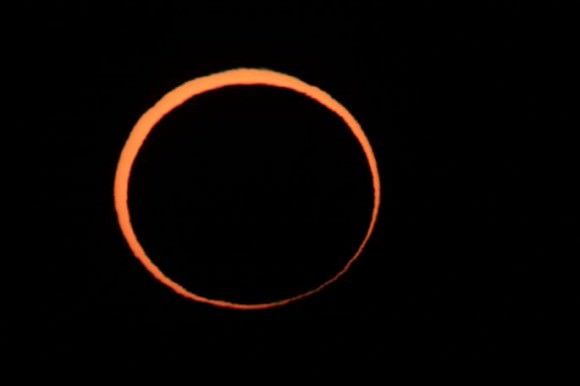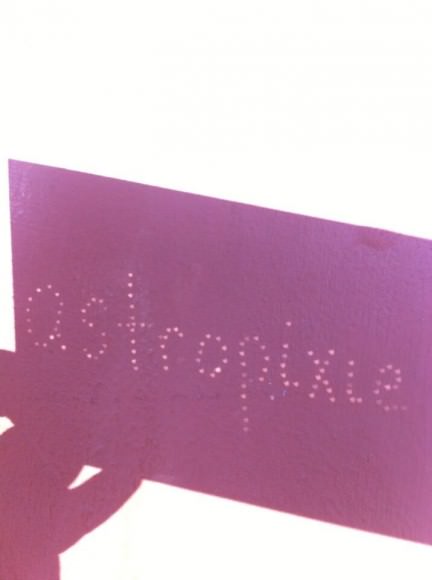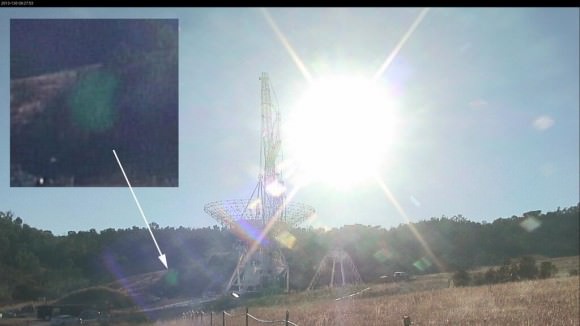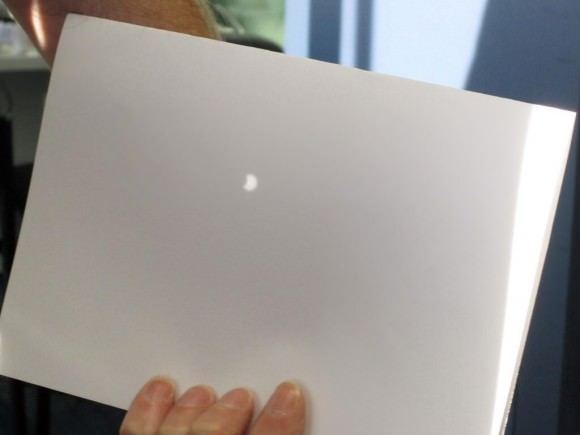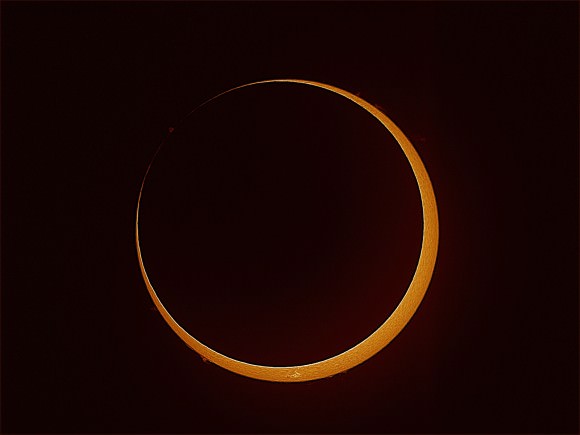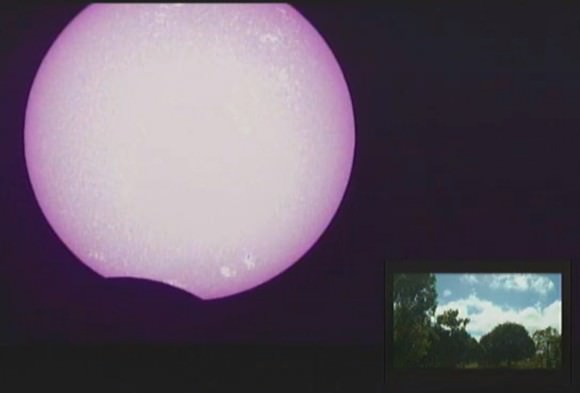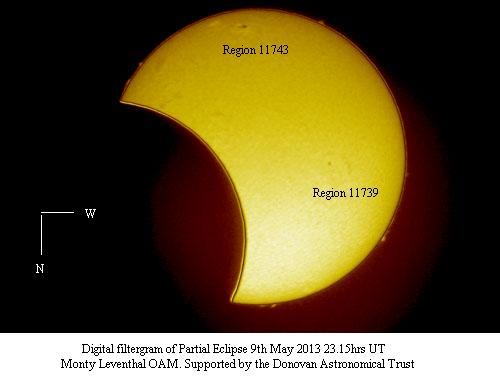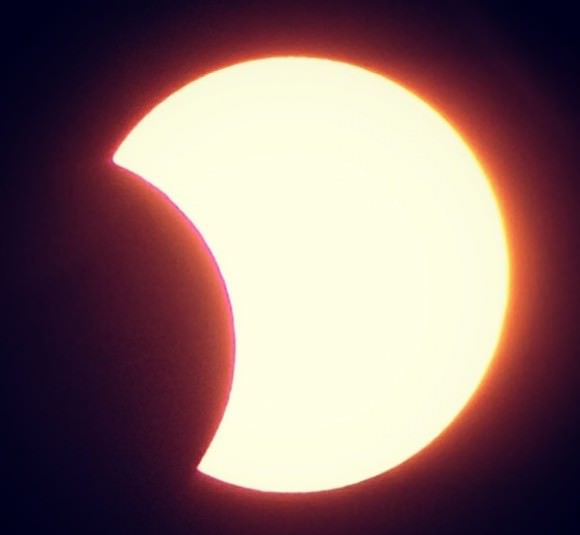It’s almost upon us. The final eclipse of 2013 occurs this coming weekend on Sunday, November 3rd. This will be the fifth eclipse overall, and the second solar eclipse of 2013. This will also be the only eclipse this year that features a glimpse of totality.
This eclipse is of the rare hybrid variety— that is, it will be an annular eclipse along the very first 15 seconds of its track before transitioning to a total as the Moon’s shadow sweeps just close enough to the Earth to cover the disk of the Sun along the remainder of its track.
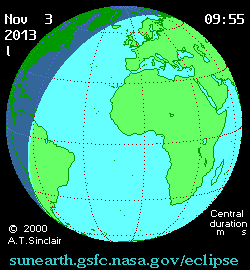
How rare are hybrid solar eclipse? Of the 11,898 solar eclipses listed over a 5,000 year span from 1999 BC to 3000 AD in Fred Espenak’s Five Millennium Catalog of Solar Eclipses, only 569, or 4.8% are hybrids.
Who can see this eclipse?
People from northern South America, across the U.S. Eastern Seaboard and up through the Canadian Maritimes will see a brief partial solar eclipse finishing up around 30 minutes after local sunrise. The brief annular “ring of fire” portion of the eclipse begins at sunrise just ~1,000 kilometres east of Jacksonville, Florida, as it races eastward across the Atlantic. See our timeline, below.
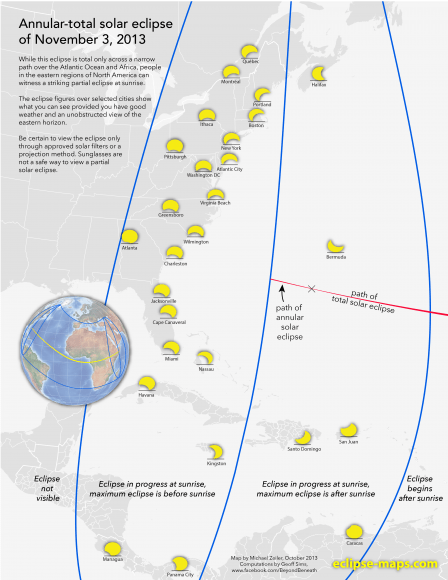
Nearly all of Africa and the southern Mediterranean region including Spain will see partial phases of the eclipse, while greatest totality occurs just off of the coast of Liberia and heads for first landfall on the African continent over Wonga Wongue Reserve in Gabon. At this point, the duration of totality will already have shrunk back down to 1 minute and 7 seconds. The shadow of the Moon will then cross central Africa, headed for a short but brilliant sunset total eclipse over Uganda, Ethiopia, Kenya and Somalia.
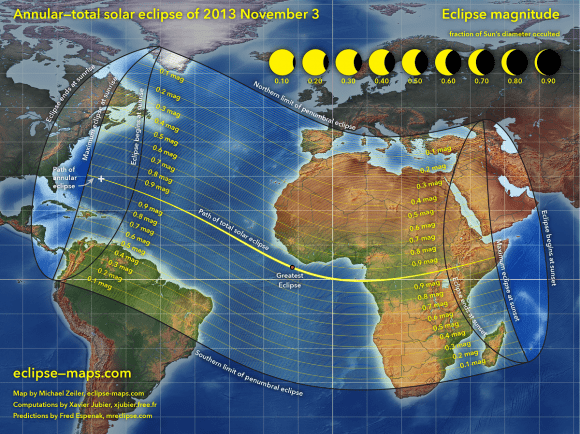
This particular eclipse part of saros series 143 and is member 23 of the 72 eclipses in the cycle. The first eclipse in this saros occurred on March 7th, 1617, and the last one will occur on April 23rd, 2897.
Saros 143 also has a checkered place in eclipse history. The last eclipse in this series crossed south eastern Asia on October 24th, 1995.
The first detailed picture of a solar eclipse was also taken of a saros 143 member on July 28, 1851. And one saros later, a total solar eclipse on August 7th, 1869 may have saved the butt of astronomer and explorer George Davidson while traversing the wilds of Alaska. And one more saros period later, Dmitri Mendeleev (he of the modern periodic table) observed the total solar eclipse of August 19th, 1887 from a balloon.
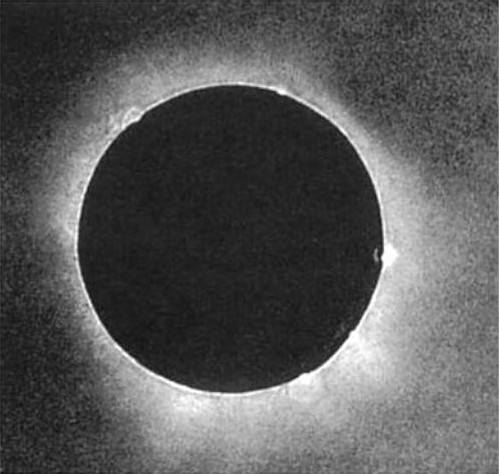
We’ve compiled a brief worldwide timeline for the November 3rd hybrid eclipse. Keep in mind, the shift back off of Daylight Saving Time occurs on the same morning as the eclipse for North America, putting the U.S. East Coast once again back to -5 hours off of Universal Time (UT):
10:04 UT: The partial phases of the eclipse begin.
11:05:17 UT: annular phases of the eclipse begin.
11:05:36 UT: The eclipse transitions from an annular to a total along its track.
12:46: The point of greatest eclipse, occurring off of the SW coast of Liberia along the coast of Africa. The path will be 57 kilometres wide at this point with a maximum duration for totality at 1 minute & 40 seconds.
14:27 UT: The total phases of the eclipse end.
15:28 UT: Partial phases end.
Remember that solar safety is paramount while observing an eclipse during all partial phases. This is especially critical, as millions of viewers along the U.S. East Coast are poised to catch the eclipse at sunrise over the Atlantic on Sunday. Use only glasses designed specifically for eclipse viewing or welder’s glass #14. One project headed by Astronomers Without Borders is also working to provide eclipse glasses to schools in Africa.

Projecting the Sun onto a wall or a piece of paper is also a safe method to observe the eclipse. Construction of a Sun Gun, a pinhole projector, or even using a spaghetti strainer or colander to project the partially eclipsed sun are all fun projects to try.
Shooting pictures of the rising eclipse is also possible using a DSLR. To capture the disk of the Sun plus an outline of the foreground, you’ll want to use a combination of low ISO 100 and a fast shutter speed (1/4000 or faster) and a zoom lens of at least 200mm or greater. Keep in mind, DO NOT look at the Sun through the camera’s view finder— simply set the focus to infinity and aim via projection. It’s worth practicing your technique a morning or two prior to the main event!
As the partial phase of the eclipse progresses, keep an eye out for “tiny crescents” that may litter the ground. These are caused by gaps in things such as leaves, latticework, etc that may act as natural “pinhole projectors”. Those lucky enough to stand in the path of totality may snare a look at shadow bands sweeping across the landscape as totality approaches, as well as catch a brief glimpse of Baily’s Beads and the pearly white corona of the Sun.
Totality will last less than a minute across most of central Africa, giving viewers a very hurried view before partial phases commence once more. Venus will be easily visible at magnitude -4.4 just 47 degrees east of the Sun. Unfortunately, prospects aren’t great for air or seaborne viewers in the mid-Atlantic to catch sight of comet ISON during the frenzied moments of totality, which will sit 50 degrees from the Sun between magnitude +7 & +8.
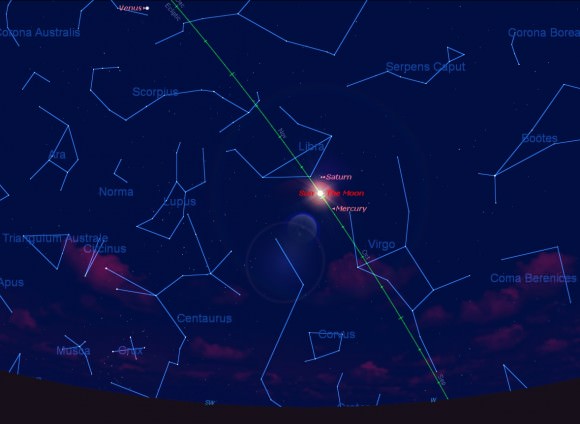
Weather prospects are an all-important consideration when planning for an eclipse. Jay Anderson maintains an outstanding site with projections tailor-made for each eclipse. For the U.S. East Coast, clear skies right down to the crucial eastern horizon will be key!
A recent surge in piracy off of the West Coast of Africa may also factor into travel considerations for eclipse chasers. You can actually monitor such activities on the high seas now in near real time. Perhaps one could take a page from Mark Twain’s A Connecticut Yankee in King Arthur’s Court, and impress any would-be-brigands with the glory of an impending solar eclipse…
Unfortunately, the International Space Station will have an orbit nearly perpendicular to the Earth-Moon-Sun syzygy, and won’t lend itself to any great prospects of a transit during the partial phases of the eclipse. ESA’s Proba-2 and JAXA’s Hinode will, however, see several partial eclipses from orbit:
Sunspot activity has also been on the upswing as of late, making for a photogenic Sun heading into the partial phases of the eclipse. A well-placed, naked eye Coronal Mass Ejection on the solar limb also isn’t out of the question. Eclipse historian and expert Michael Zeiler notes that a CME last occurred during a total solar eclipse way back in 1860.
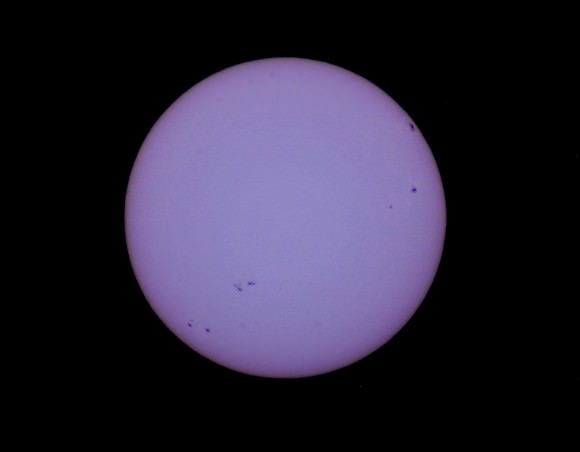
Totality for this eclipse passes over some wild and largely wifi free areas; few plans to broadcast the eclipse live have surfaced thus far.
Slooh plans a broadcast, as did a proposed Indiegogo project whose current status is unclear. BRCK also plans to broadcast the eclipse live from the shores of Lake Turkana, Kenya. Got plans to webcast even the partial phases of the eclipse? Let us know!
And speaking of eclipse chasing, we plan on heading to the Florida Space Coast Sunday morning at o’dark thirty to nab the partial sunrise eclipse over the Atlantic.
And as always, the question posed immediately after totality is: when’s the next one? Well, the next annular eclipse graces Australia on April 29th, 2014. The U.S. will also see a partial solar eclipse on October 23rd next year… but totality will not touch the surface of our fair planet until a high Arctic eclipse on March 20th, 2015.
Good luck, clear skies, and safe journeys to all who are chasing after this one near and far, and don’t forget to post those pics to Universe Today’s Flickr page!
-See more of Michael Zeiler’s work at Eclipse Maps.
-Simulations were created using Starry Night Education Software.

